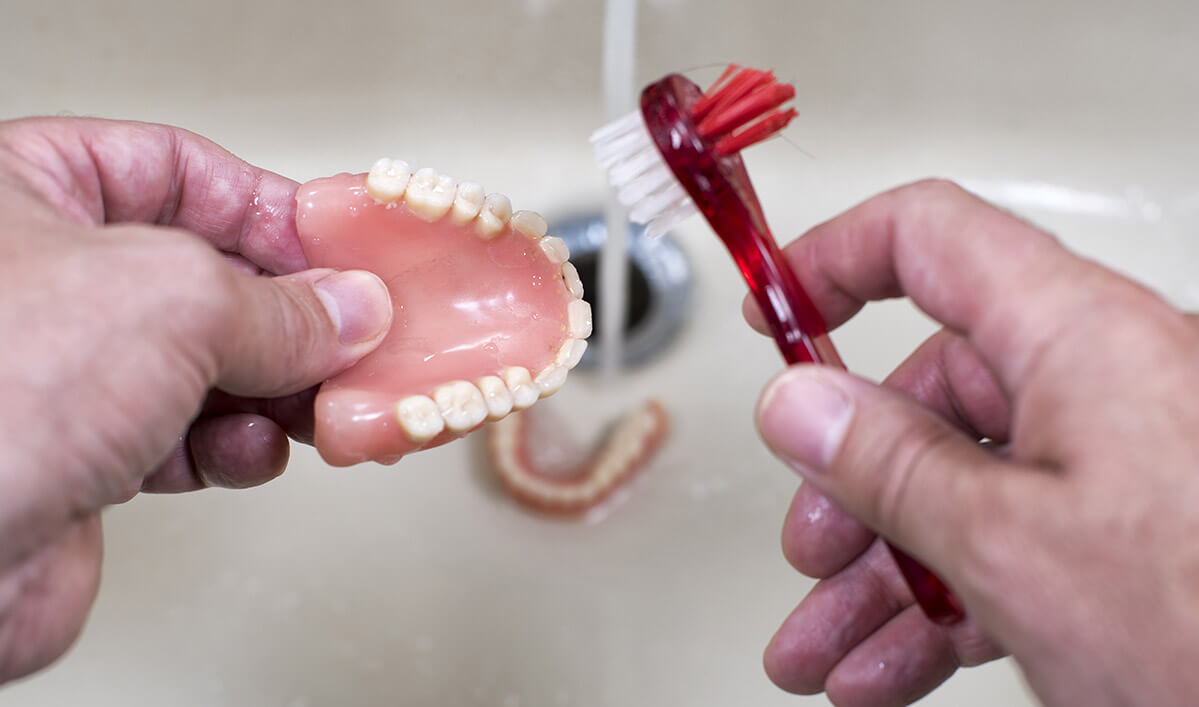
You remove it at night, but don’t just leave it anywhere—it still needs attention
You take it out. You’re tired. You place it on the sink. That’s not enough. Your dental prosthesis isn’t self-cleaning. Leaving it exposed invites bacteria. Dust settles. Moisture dries it unevenly. Always rinse it under lukewarm water. Never hot. Heat can warp it subtly, slowly. Store it in a container—not dry, not soaking in anything random. Your dentist might suggest a special solution. Ask. The answer depends on your material.
Brushing the prosthesis isn’t like brushing real teeth—it’s softer, more deliberate, and more frequent
You grab your regular toothbrush. It’s too rough. It scratches acrylic. Prosthetics need a soft brush. One made for them. Use non-abrasive paste or liquid soap. Not whitening paste. Not baking soda. Those strip the surface, create tiny grooves. Bacteria love those grooves. Brush twice a day. Every angle. Rinse well. Set it down gently. That’s daily maintenance—not optional, essential.
Your gums still need care—even if the prosthesis covers them most of the day
Out of sight doesn’t mean out of routine. Underneath the prosthesis, your gums breathe less. Blood flow reduces. Bacteria might build up. Remove the prosthesis and gently massage the gums. Use a soft toothbrush or clean finger. This improves circulation. Reduces risk of ulcers or inflammation. If you have implants, clean around them meticulously. Infection near implants is harder to reverse.
Skipping dental visits invites small issues to grow quietly, unnoticed under the surface
The prosthesis fits well now. But your mouth changes. Bone resorbs. Gums shift. That perfect fit loosens over months. If ignored, it rubs. Irritates. Or worse—fails. You won’t always notice these shifts. Dentists will. They check alignment. Pressure points. Structural wear. Visit them every six months. Not just for emergencies—but for prevention.
Bad breath might not mean poor hygiene—it could be trapped moisture or slow bacterial growth
You clean every night. Still, an odor lingers. The issue might be where water stays. In grooves. Under attachments. Use a denture soak weekly. Let it bubble away hidden residue. If smell persists, bring it in. Your dentist might recommend ultrasonic cleaning. At home, drying the prosthesis properly helps too. Avoid tightly sealed containers. Let air circulate while keeping dust out.
Accidents happen—but repairing prosthetics with glue or DIY kits can cause irreversible damage
A crack forms. A tooth chips. You panic. Don’t reach for superglue. Most household adhesives are toxic or damaging. They alter the fit. Change the chemistry. What feels like a fix might turn a small repair into a full replacement. Always bring it to your dentist. They know the material, structure, and tolerances. Most times, professional repairs are quick. And safer.
Over time, your prosthesis may stain—what you drink, eat, and how you clean matters
Coffee. Tea. Red wine. Curry. All stain slowly. Even well-cleaned prosthetics absorb pigment. Especially porous materials. Avoid using bleach. It weakens the structure. Instead, use dentist-approved tablets or soaks. Rinse immediately after staining foods. And try drinking stain-heavy beverages through a straw. Small habits help preserve brightness longer than you’d expect.
If your speech feels off, or chewing becomes uncomfortable, it’s not you—it’s time for adjustment
You start lisping. Biting feels unbalanced. You chew slower. That’s not clumsiness—it’s your prosthesis telling you it changed. A pressure point formed. A minor shift happened. Don’t adapt in silence. Let your dentist reline or reshape it. Minor tweaks make major differences in daily ease. Don’t let discomfort become your new normal.
Sleeping with your prosthesis in might feel convenient, but it’s risky for your oral tissue
You forget. Or don’t feel like removing it. But nighttime is when your gums recover. Sleeping with a prosthesis compresses tissue for hours. Increases bacteria growth. Reduces oxygen flow. If it’s removable, take it out. Let your mouth rest. For fixed types, follow a stricter hygiene protocol. Use water flossers. Interdental brushes. Clean more deeply, not just more often.
If it feels stable, don’t assume it’s perfect—small changes in bone can cause slow misalignment
Your prosthesis sits fine today. But six months later, you notice clicking. Or tenderness. Your jaw might be shifting. Bone density drops with time. Especially after extractions. That causes minor gaps, tension, uneven force. These don’t scream—they whisper. Regular checks catch the whispers before they echo loudly.
